The Titanic Fate of the Anchor Tenant
Major retailers and corporations were once the beating heart of any commercial real estate project. These anchor tenants brought deep pockets and longevity. They committed to long leases of big spaces and attracted the footfall that spilt over to other tenants. Their commitments provided the leverage for major projects to be financed and built.
But times have changed. The move towards online shopping and remote work started more than 20 years ago, but the global pandemic accelerated it massively.
Trips to our city centres, which were once unavoidable, are now often optional, and who wants to trudge to work five days a week on crowded trains, spend £20 on lunch and get caught in the rain anyway?

Urban Exodus
We’re seeing empty retail and office space everywhere, even in high-density, desirable places. A recent McKinsey study showed that major cities like New York and San Francisco lost more than 5% of their urban core population, and they predict that demand for commercial space in top cities will be 13% lower in 2030 than in 2019.
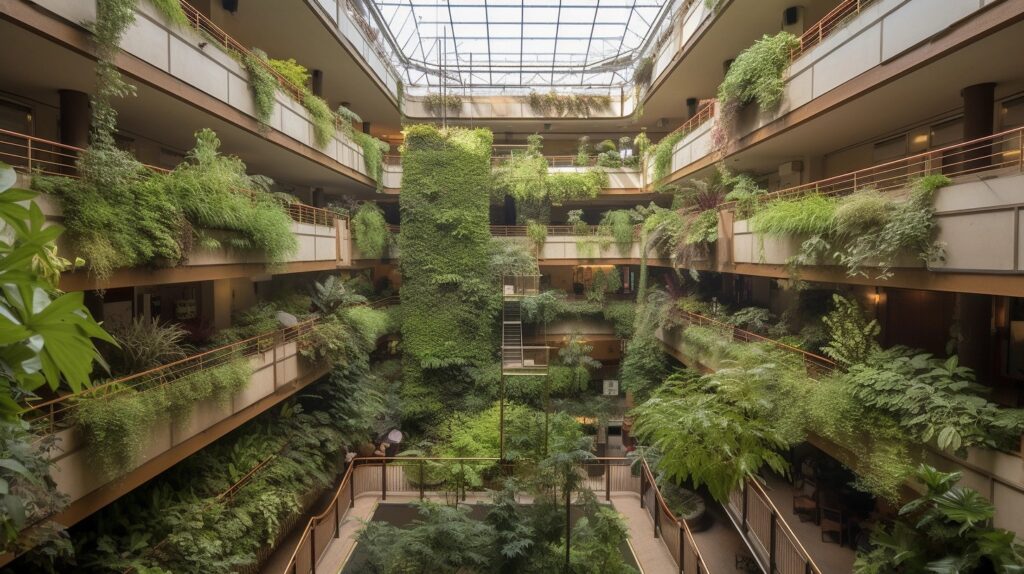
This is obviously a financial problem for landlords, especially if they need to refinance. It’s also bad for the surrounding community, which loses vibrancy when too many spaces are vacant and becomes even less attractive for future residents and businesses.
Unfortunately, anchor tenants won’t solve the problem anymore. In this post-pandemic world, they’re no longer the footfall generators they once were. The question is, who can replace them?
Here are five ways we think tenants can overcome the challenges our urban centres face and breathe new life into modern commercial spaces.
1. Make space for interactions, not just transactions
A simple transaction is no longer a compelling reason to leave the house. We can perform most, if not all, of the essential transactions in our lives online—shopping, banking, work meetings, and even doctors’ visits. For commercial real estate to survive, it will need to offer truly engaging experiences that cannot be recreated online. Our most successful commercial spaces are designed for interactions.
Some retailers have turned their brick-and-mortar stores into brand interaction experiences.
Apple has been perfecting this for years by creating a store that is akin to a “town hall,” where people come to experience groundbreaking technology, exchange ideas and, most importantly, learn. Apple’s Geniuses are renowned for their insights, and the newer Apple stores even offer “Hour of Code” workshops, teaching kids Swift programming, and “Teacher Tuesdays” assist teachers in integrating Apple technology into their classrooms.
Another way retailers drive traffic to in-person stores is by fostering brand communities.
The iconic streetwear brand Supreme are masters at this, offering exclusive “drops,” limited edition merch, and unique collaborations only available in-store. Supreme incentivises customers with scarcity and exclusivity; the store experience feels like a clubhouse, and getting a piece from the latest drop feels like a real achievement and an initiation into the culture.
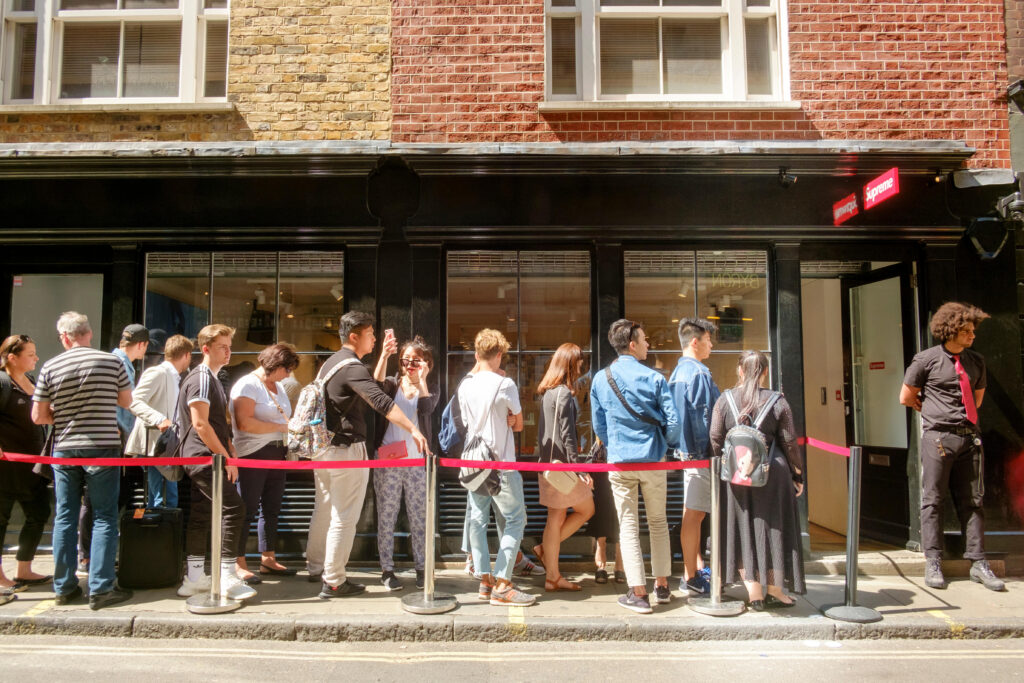
The brick-and-mortar experience fosters a shared fandom. Online communities anticipate releases together and then meet up at the store, queuing and sharing in the excitement together. This transforms the shopping experience into a social event and positions Supreme locations as central hubs for like-minded enthusiasts and digital communities to connect and engage with the brand.
Nike has taken in-store experiences to the next level.
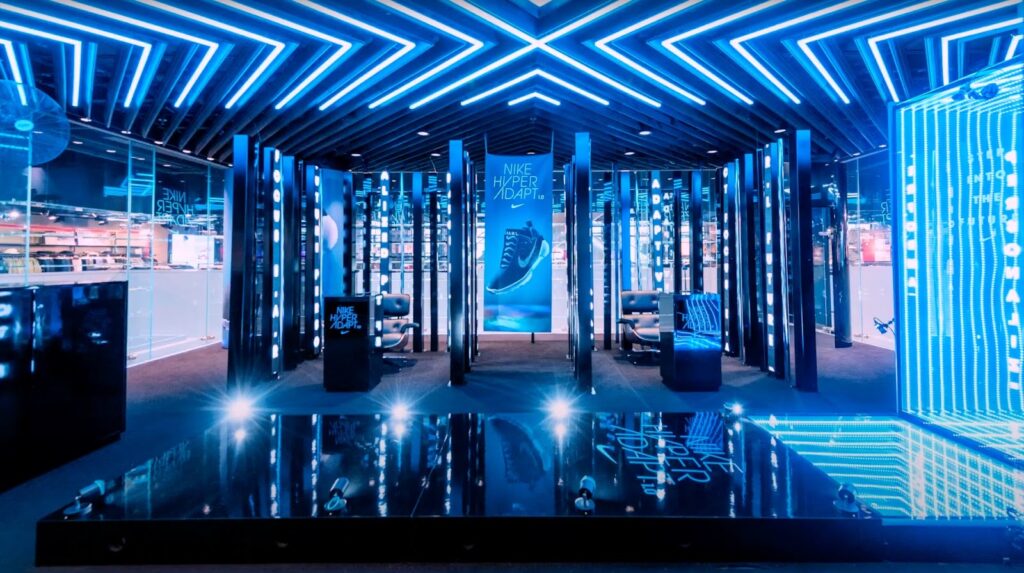
At NikeTown on Oxford Street, London, the iconic sportswear brand has spent years skillfully merging in-person shopping with digital interactions to engage customers with next-gen products, like the Back To The Future-esq, self-lacing Nike Hyper Adapt 1s.
Customers enter a 360-degree VR experience where they tour a virtual recreation of Nike design legend Tinker Hatfield’s studio. Tinker’s virtual avatar talks customers through the tech that made this marvel come to life. Afterwards, they are invited to try on and test the full capabilities of the HyperAdapt Technology.

It’s an innovative way to sell the in-store experience (and some pretty expensive shoes), which is augmented by surrounding events like launch parties with celebs and designers in attendance.
Personalisation is another way in which retail tenants are differentiating the in-store experience from e-commerce.
Nike World has the NikeiD counter where you can have your initials or favourite avatar embroidered onto your purchase. Levi’s has a similar in-store experience, The Tailor Shop, where customers can have their favourite jeans repaired, altered or customised. Cult brand Fjällräven invites customers to bring their winter coats in for a free waxing every 12 months, incentivising customers to return to a physical location each year just before the holiday season. These are practical and fun additions to the in-store experience, and the personal touch gives them an edge over impersonal e-commerce.
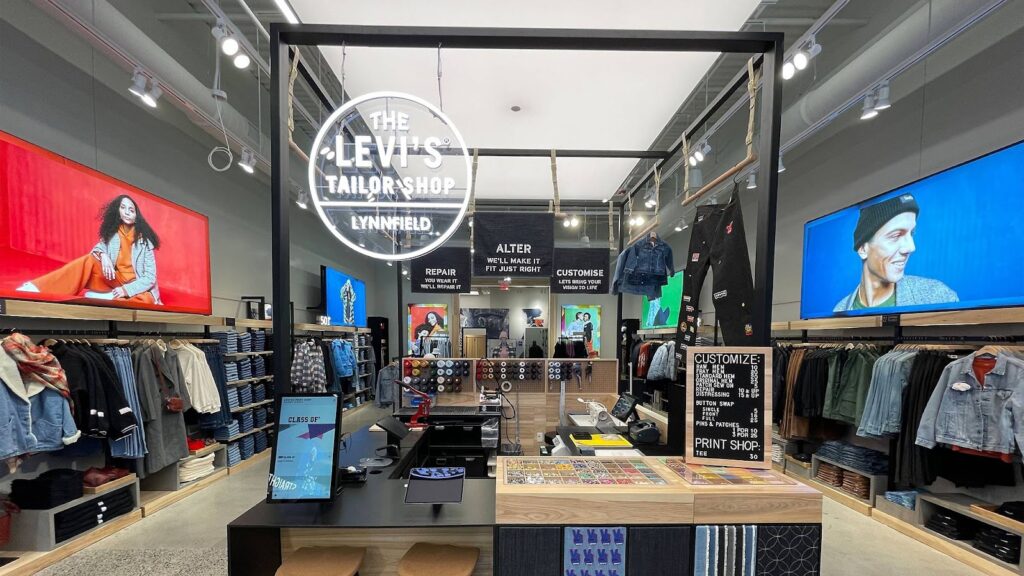
Retail experiences are just a part of omni-channel customer engagement, but they’re a crucial one; brick-and-mortar locations become like clubhouses which sit at the centre of the brand experience.
This sense of membership is perfectly embodied in the Nike+ loyalty program. Nike’s flagship store in NYC offers an immersive experience where members enjoy personalised perks like access to a “local favourite collection,” item reservations with locker pickup, QR-code shopping assistance, instant checkout, and expert consultations. In short, It makes the in-store experience worth the trip.
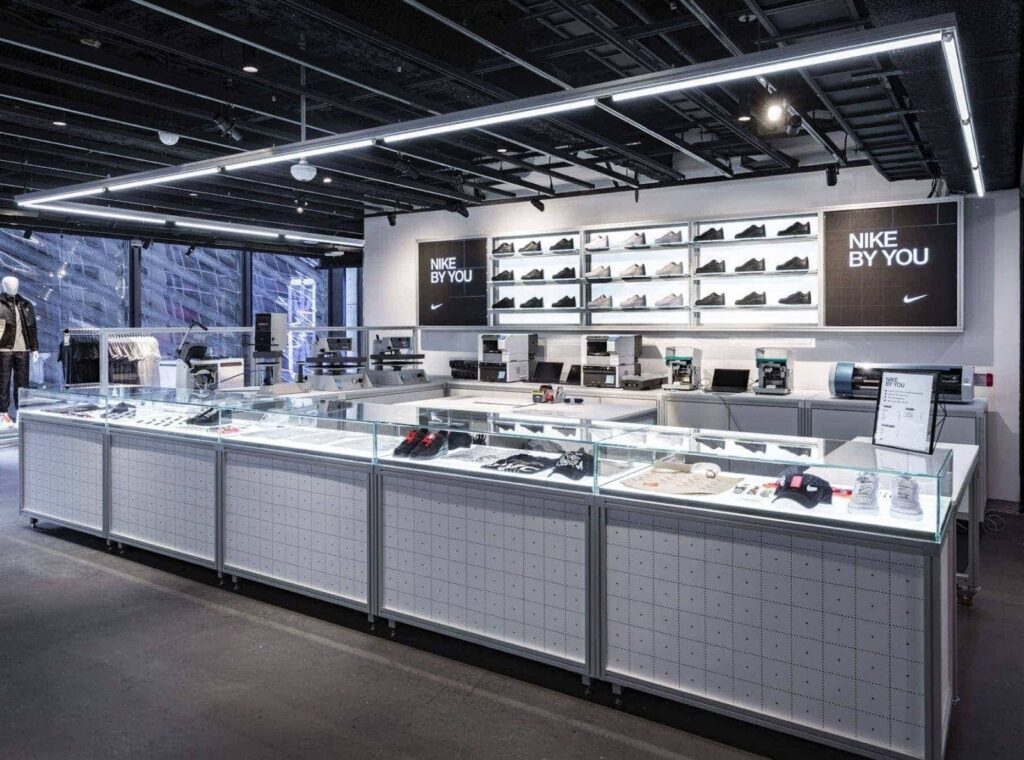
2. Make the office a party
The idea of making space for interactions applies to offices as well. Employees can interact with their teams in a transactional way online; it gets the job done, but it’s bad for productivity, organisational fraternity and the office itself. It’s clear that central business districts (CBDs) are suffering as a result; e.g. weekday tube journeys to the City of London have only managed to reach 70% of the pre-pandemic levels.

According to the Harvard Business Review, 73% of employees need a better reason than just company expectations to return to the office.
In the Microsoft work trend index, a study of 20,000 people in 11 countries found that the majority of employees are motivated to return to the office for social interaction, with 85% wanting to rebuild team bonds, 84% eager to socialise with co-workers, 74% influenced by the presence of work friends, and 73% motivated by the presence of their direct team members. What employees most value is the opportunity to socialise with their colleagues.
This presents a big opportunity for commercial spaces. A drive to make the workplace more sociable will mean that offices and their surrounding areas need to become more varied, with a mix of retail, hospitality and entertainment.
Squint/Opera reimagined commercial spaces at The Plaza at 1221 Avenue of the Americas, transforming 65,000 sq ft in Midtown Manhattan into a vibrant destination for immersive brand experiences; it’s a great illustration of a diverse mixed-use district and how we can make our CBDs more vibrant and enticing.
3. Prioritise variety and novelty, not just utility
For most people, there’s infinite entertainment available within arm’s reach at any given moment. To move people from their couches and out of the door, entertainment spaces need to offer the opportunity to discover or do something new.
Battersea Power Station in London combines offices with residential shops, restaurants, an event venue, and a movie theatre. It’s also home to Lift 109, an interactive observation experience. Squint/Opera, in collaboration with Ralph Appelbaum Associates, designed a shoulder experience on either side of the main event that immerses visitors in the history of Battersea Power Station and manages visitor flows to make the sense of queuing for the breathtaking lift disappear.
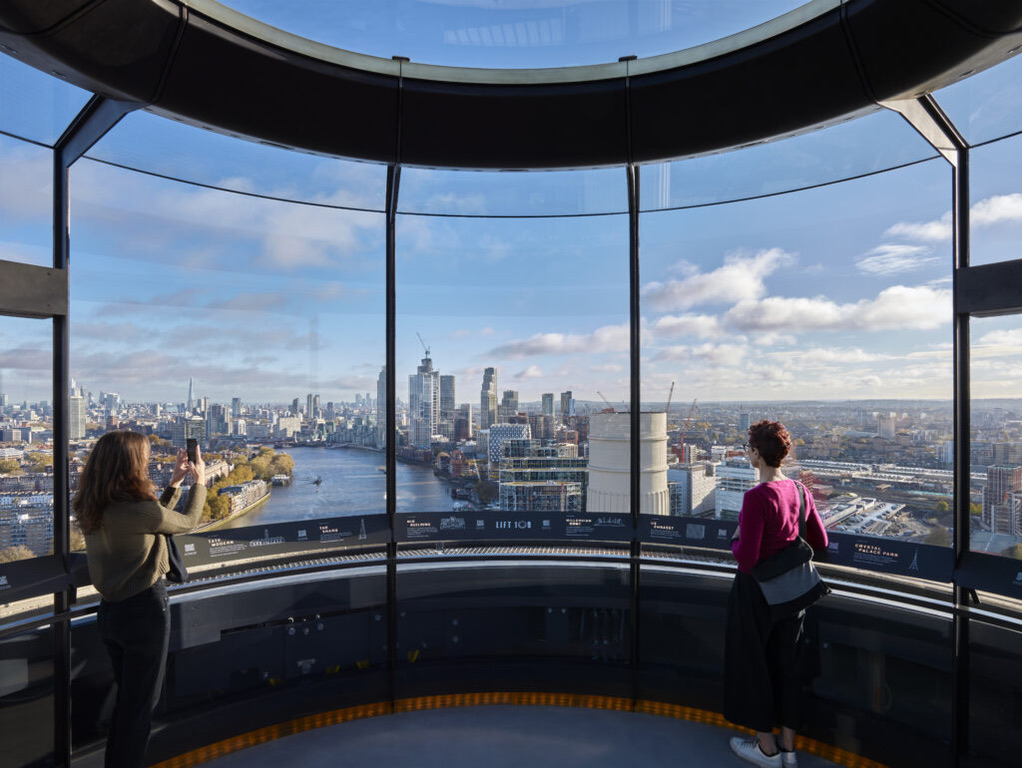
TSX in New York City is another place where different kinds of spaces combine to create a vibrant playground. It includes two performance venues, a retail gallery, an exhibition hall, multiple restaurants, a VIP lounge, recording studios, and a luxury hotel. But most importantly, its street-facing stage transforms Times Square itself into a performance venue, connecting the interior with the exterior and artists with their fans.
4. Create off-peak extravaganzas
Mixing usage is a compelling way to make the best use of under-utilised or seasonal spaces like sports stadiums. Those that have thrived best in recent years find creative ways to engage with people beyond the game. Milwaukee’s American Family Field baseball stadium features a giant slide and indoor golf simulators.

Tottenham Hotspur football stadium has partnered with Formula 1 to build an electric karting track under the South Stand.
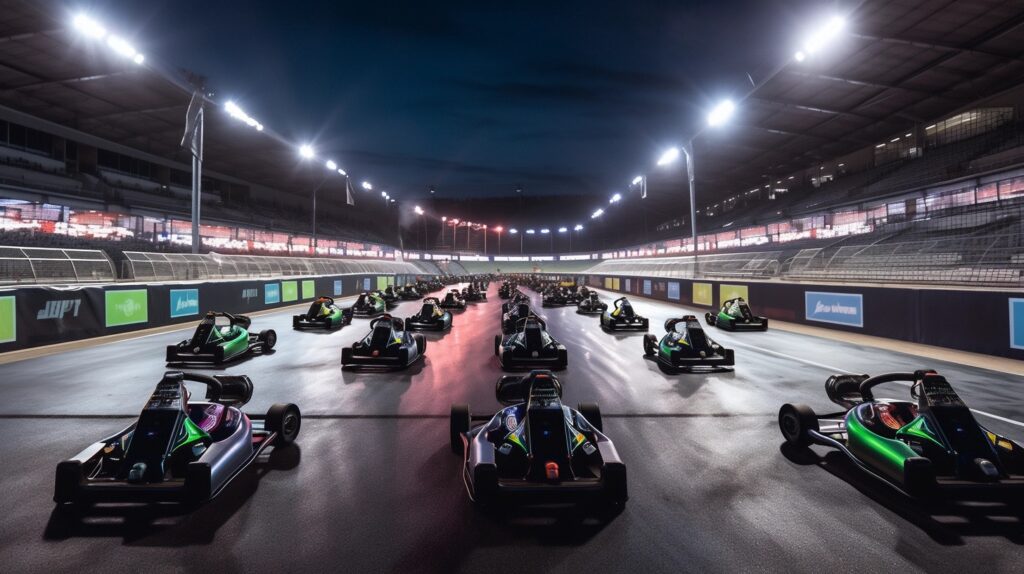
At the Rogers Centre baseball stadium in Toronto, several rows of bleachers were turned into an open area with lawn games, an arcade, and a craft cocktail bar! These amenities make the stadium more than a place to watch the game–they’re fun places to hang out, even for people who aren’t necessarily sports fans.
5. Diversify and thrive
When landing one big anchor tenant isn’t enough—or isn’t even possible anymore—there are new ways of doing things to consider. Long leases for large spaces only work for certain kinds of businesses, usually major national retail chains and corporations, seriously limiting the variety provided to audiences and limiting the ability to fill vacant spaces.
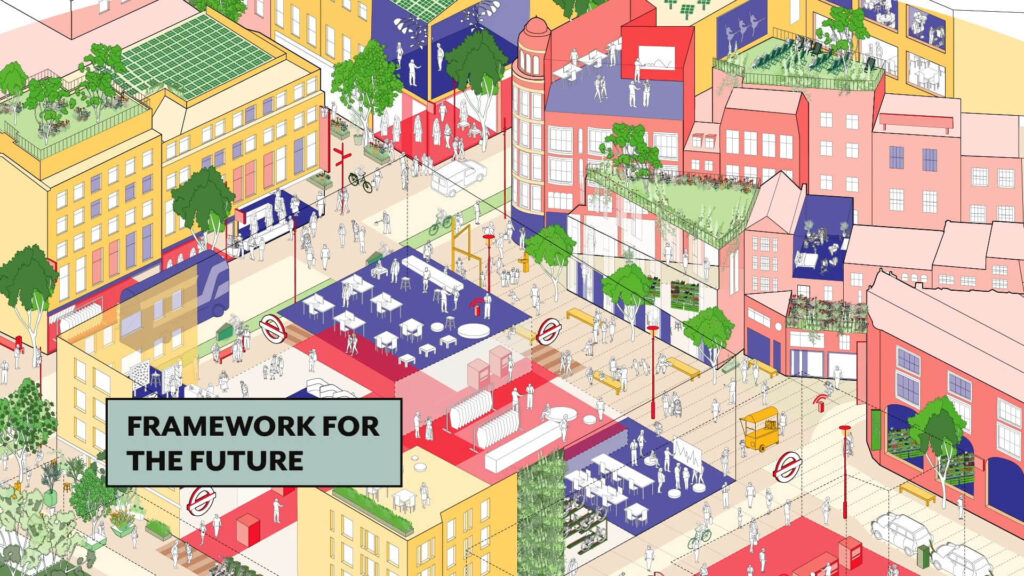
These new market conditions call for a more flexible way of doing business. Developers and landlords must be open to smaller, shorter-term tenants whenever possible. That might include start-ups, mom-and-pop stores, pop-up shops and restaurants, or other kinds of tenants outside the “safe zone” of national brands. Higher turnover doesn’t have to be a bad thing—it keeps the mix fresh and attracts visitors to come back and see what’s new.
Established in 2011, BOXPARK relies on independent pop-up shops, and the constant rotation of brands to keep it endlessly explorable. And while some may have argued 10 years ago that this would only work in a city with the density of London, Boxpark is still finding success post covid and forging ahead with new locations in Liverpool and Birmingham.
Commercial real estate has had a rough few years. The pandemic may be over, but the way we live and do business has permanently changed. Landlords and developers who are waiting for a miraculous revival of footfall in their commercial spaces may be disappointed.
It’s a challenge to adapt existing infrastructure to this new reality. The first step is recognising that the old strategies won’t work anymore. The solution isn’t a new, bigger, or better anchor tenant. It’s creating spaces that offer things people can’t get at home— interaction, surprise, and, most importantly, human connection.
